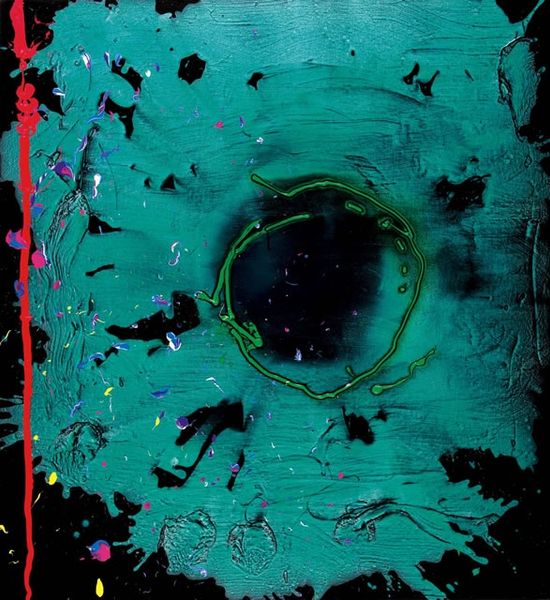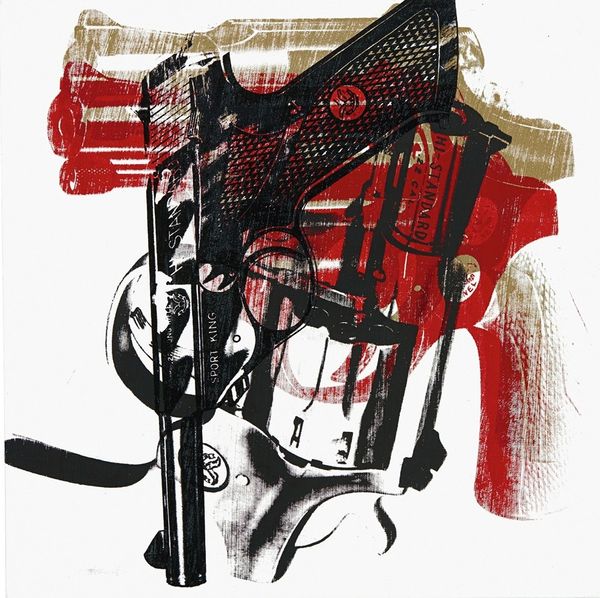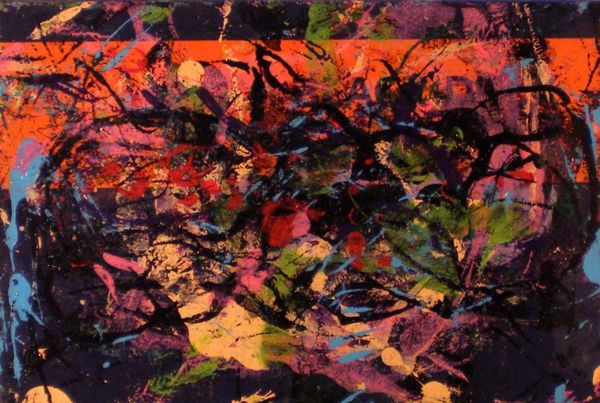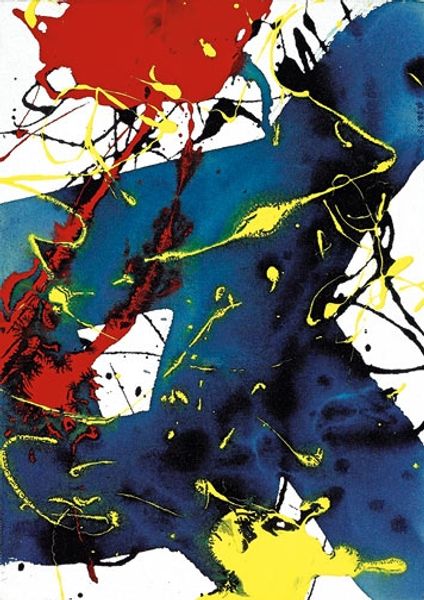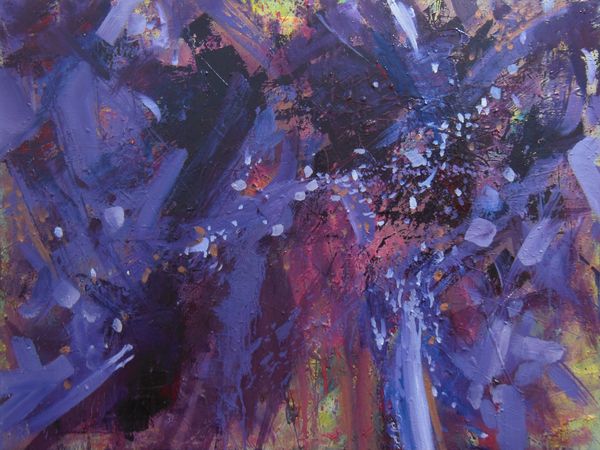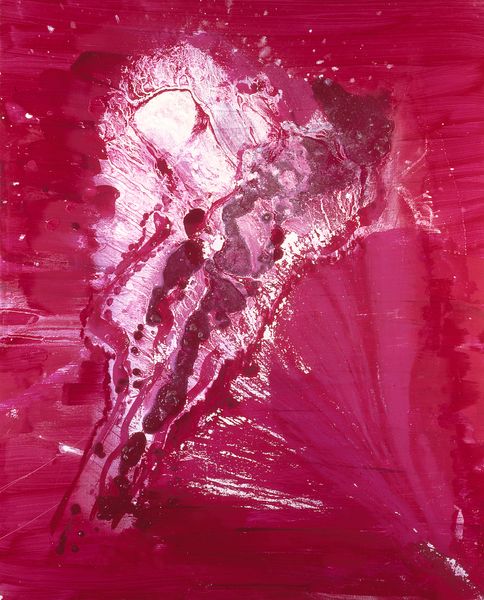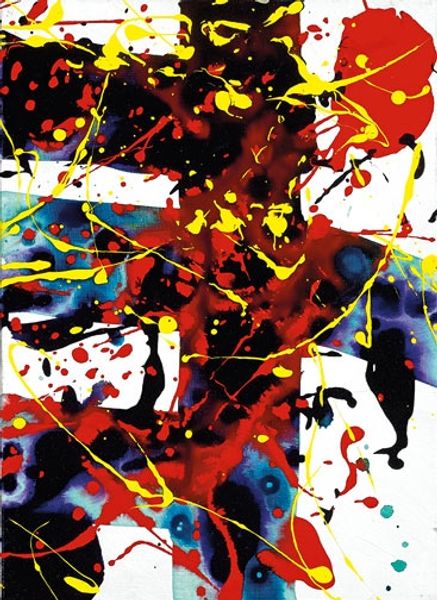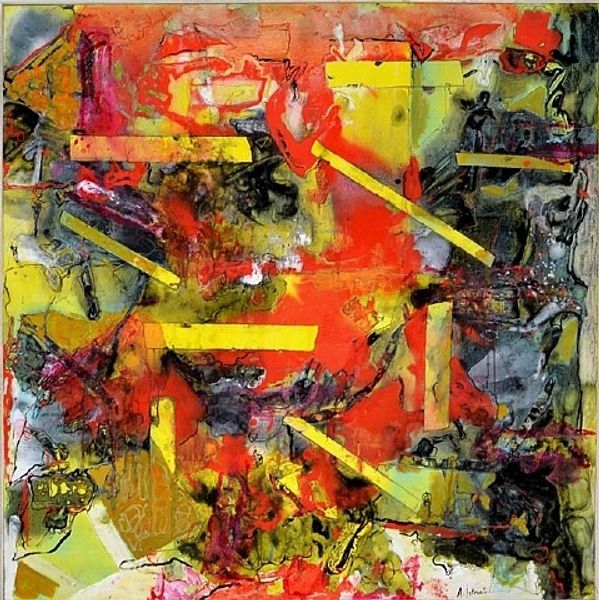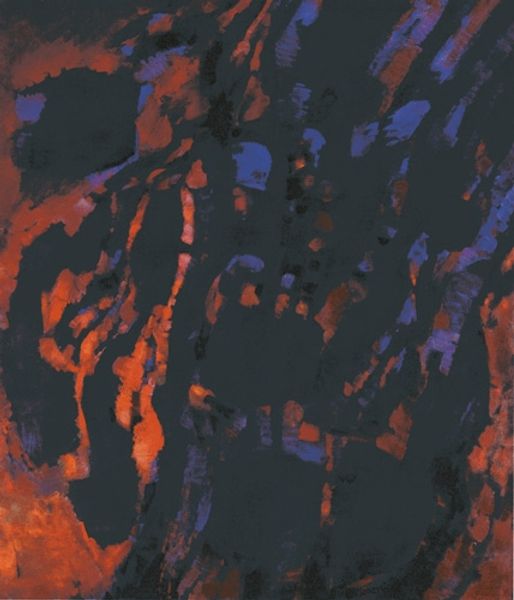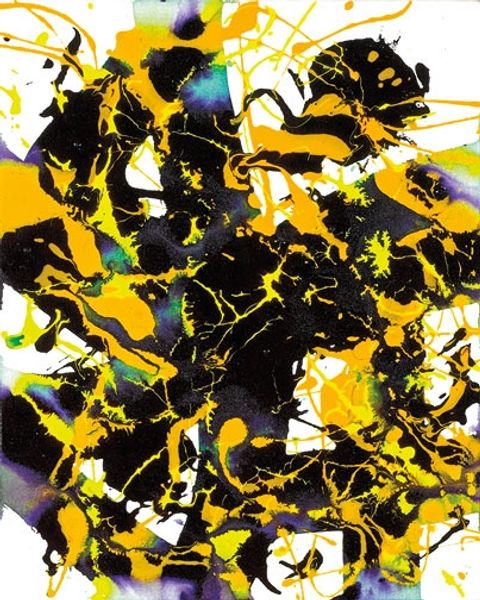
Copyright: Modern Artists: Artvee
Editor: This is Andy Warhol's "Human Heart" from 1979, crafted with acrylic paint. The colors are so vibrant, almost aggressive. What can you tell me about it? Curator: Warhol's use of acrylic here is quite deliberate. In the late 70s, the shift toward these synthetic materials marked a crucial transition in art production, reflecting industrial advancements and mass production. Does that resonance with you? Editor: Yes, I see that now! The stark, almost screen-printed effect echoes his earlier works, blurring the line between handmade and mass-produced imagery. Was there a specific reason he chose this subject? Curator: Consider the context. The 70s were a period of economic upheaval and anxieties surrounding corporatization. By depicting something as intensely personal as a heart through a mechanical medium, Warhol comments on the commodification of emotions and even the body. What about the labor involved in creating this? Editor: It's fascinating to think about. While it seems gestural, there's clearly a controlled, almost detached application of paint, mirroring the alienation of labor in a capitalist society. Curator: Precisely! Warhol’s “Human Heart” invites us to contemplate the means by which art is produced and consumed, revealing much about the socioeconomic realities of its time. I encourage you to consider the artistic decisions relating to material transformation, which challenge our traditional understanding of "fine art". Editor: I've definitely gained a fresh perspective. Looking at it now, it's not just a pop image, but a critical commentary on materialism itself! Curator: Indeed. Warhol encourages a materialist reading of his art and of the wider world.
Comments
No comments
Be the first to comment and join the conversation on the ultimate creative platform.
